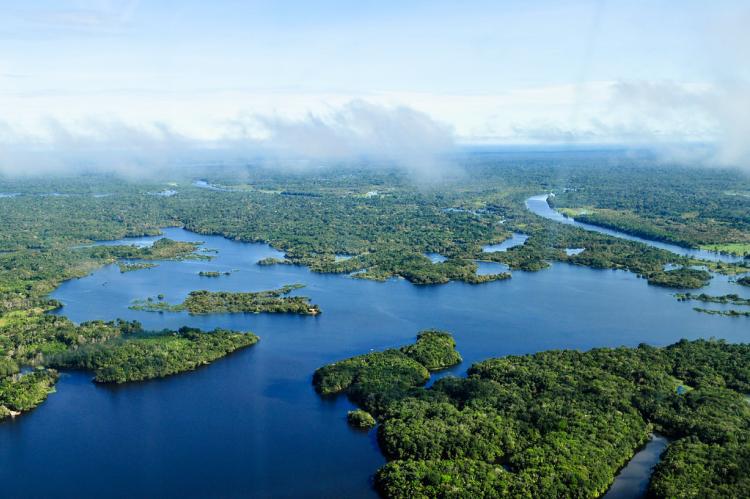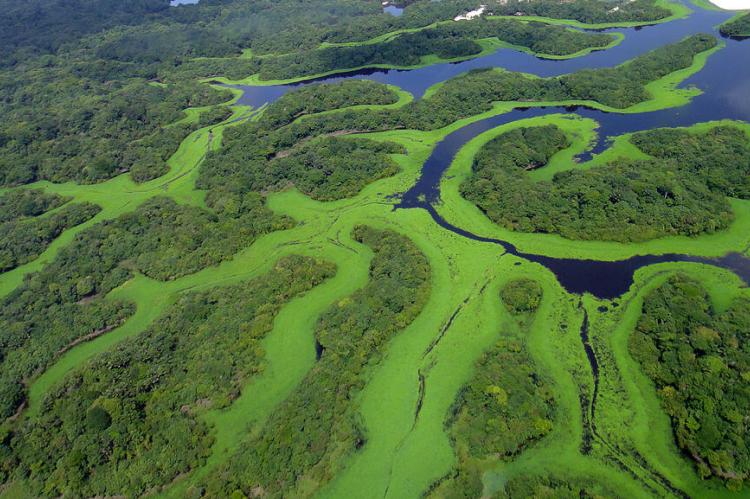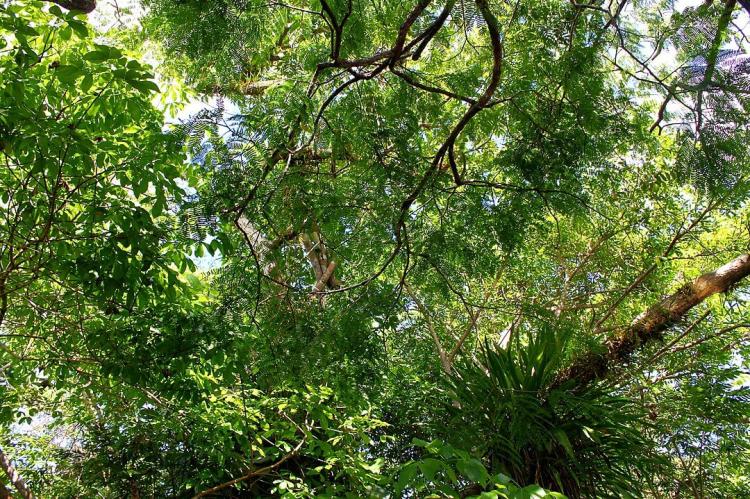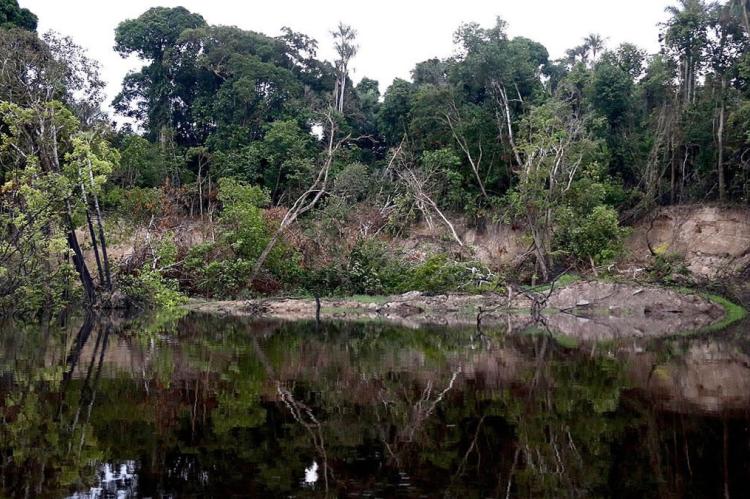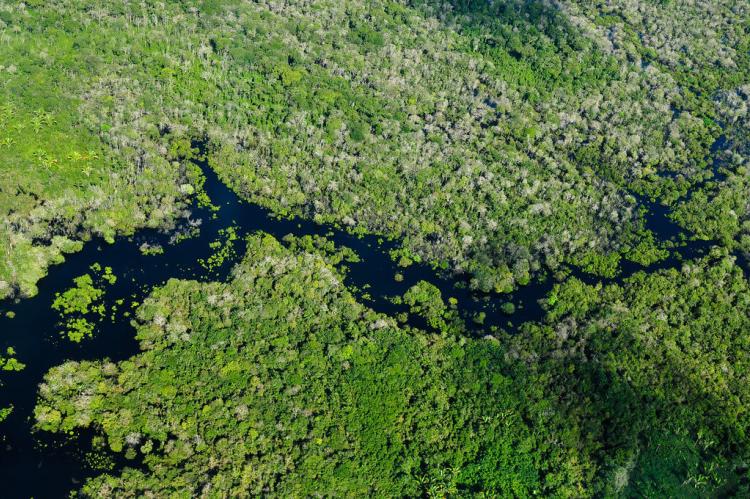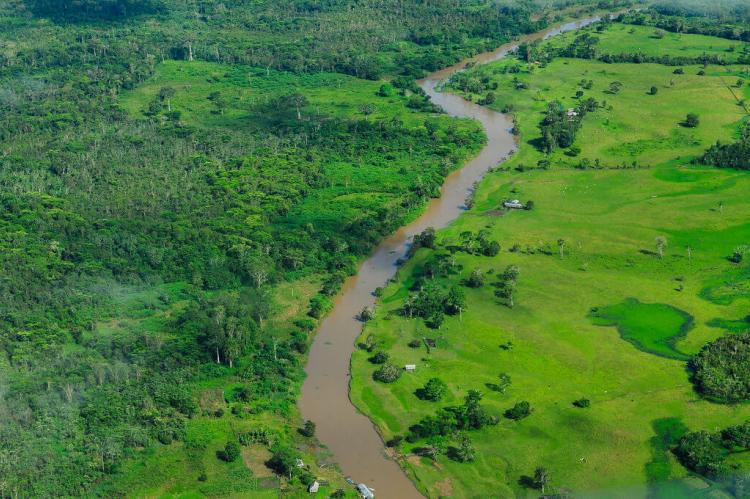Central Amazon Ecological Corridor: Nurturing Biodiversity and Sustainability
The Central Amazon Ecological Corridor encompasses a diverse range of ecosystems within the Amazon Rainforest. Stretching across the heart of the Amazon Basin, this ecological corridor plays a role in preserving biodiversity, mitigating climate change, and promoting sustainable development.
The Central Amazon Ecological Corridor: A Pathway for Conservation and Sustainability
The Central Amazon Ecological Corridor (CAEC) is a vital and extensive protected area in Brazil. It encompasses a diverse range of ecosystems, habitats, and species within the Amazon Rainforest. Stretching across the heart of the Amazon Basin, this ecological corridor plays a significant role in preserving biodiversity, mitigating climate change, and promoting sustainable development in the region.
Conservation Units
The Central Amazon Ecological Corridor encompasses a network of specific conservation units, each playing a crucial role in the corridor's overall conservation objectives. These units are established to protect and preserve the biodiversity and ecosystems of the Amazon rainforest. The composition of the CAEC may evolve, and additional conservation units may be added over time as part of ongoing conservation efforts.
Central Amazon Conservation Complex
The Central Amazon Conservation Complex, a UNESCO World Heritage property located near Manaus, the capital of Amazonas state, is the core area of the Central Amazon Ecological Corridor. It includes the Central Amazon Biosphere Reserve.
Jaú National Park
Jaú National Park (Parque Nacional do Jaú) is one of the largest conservation units within the CAEC. It is a UNESCO World Heritage Site and home to many species, including jaguars, manatees, and various bird species. The park's preservation is vital for maintaining intact rainforest ecosystems.
Anavilhanas National Park
Anavilhanas National Park (Parque Nacional de Anavilhanas), encompasses the Anavilhanas River archipelago in the Río Negro. It was established in 1981 as an ecological station and later reclassified as a National Park in 2008.
Amanaã Sustainable Development Reserve
The Amanaã Sustainable Development Reserve (Reserva de Desenvolvimento Sustentável Amanaã) focuses on preserving the region's biodiversity while supporting sustainable land use practices. It collaborates with local communities to balance conservation with economic activities such as fishing and ecotourism. The reserve's efforts ensure the protection of unique ecosystems and contribute to sustainable livelihoods for its inhabitants.
Mamirauá Sustainable Development Reserve
The Mamirauá Sustainable Development Reserve (Reserva de Desenvolvimento Sustentável Mamirauá), a UNESCO Biosphere Reserve in Amazonas, Brazil, is renowned for its innovative approach to conservation. It integrates biodiversity protection with sustainable development, scientific research, and community involvement. Located in a floodplain ecosystem, it is home to unique species like the white uakari monkey. It supports sustainable fishing and ecotourism, making it a model for balancing environmental preservation and local livelihoods.
Uatumã Sustainable Development Reserve
The Uatumã Sustainable Development Reserve (Reserva de Desenvolvimento Sustentável Uatumã), located in the northern part of the CAEC in Amazonas, Brazil, conserves biodiversity while promoting sustainable resource management. Home to diverse ecosystems and species, the reserve supports ecotourism, sustainable fishing, and forestry in collaboration with local communities. Its focus on balancing environmental protection with economic development makes it a vital part of conservation efforts in the Amazon.
Rio Amapá Sustainable Development Reserve
The Rio Amapá Sustainable Development Reserve (Reserva de Desenvolvimento Sustentável Rio Amapá), located along the Amapá River in Amazonas, Brazil, is a protected area within the CAEC. It aims to conserve the region's rich biodiversity while supporting sustainable livelihoods for local communities. The reserve integrates conservation with activities like small-scale agriculture, fishing, and ecotourism, ensuring the ecological integrity of the Amazon is maintained. By balancing environmental preservation with community involvement, it serves as a model for sustainable resource management in the rainforest.
Mapinguari National Park
Mapinguari National Park (Parque Nacional Mapinguari), spanning parts of Amazonas and Rondônia in Brazil, is a vital conservation area within the Amazon. Known for its pristine rainforests, the park protects diverse ecosystems and a wealth of biodiversity, including endangered species like the giant armadillo and harpy eagle. It plays a critical role in preserving water resources and carbon sequestration while supporting scientific research and sustainable tourism initiatives.
Piagaçu-Purus Sustainable Development Reserve
The Piagaçu-Purus Sustainable Development Reserve (Reserva de Desenvolvimento Sustentável Piagaçu-Purus), located in Amazonas, Brazil, focuses on conserving the Amazon's biodiversity while supporting traditional and Indigenous communities in sustainably managing their natural resources. Rich in wildlife and aquatic ecosystems, the reserve promotes sustainable fishing, forestry, and ecotourism, ensuring the protection of vital habitats and the cultural heritage of its inhabitants.
Itatupã-Baquiá National Forest
The Itatupã-Baquiá National Forest (Floresta Nacional de Itatupã-Baquiá), situated in the state of Amazonas, Brazil, is a protected area within the CAEC. This national forest is dedicated to sustainable use, combining biodiversity conservation with responsible resource management. It supports activities like selective logging, non-timber forest product harvesting, and ecological research, contributing to preserving the Amazon's unique ecosystems while fostering sustainable development.
Historical Context
The Central Amazon Ecological Corridor is in the heart of the Amazon Basin, one of the planet's most biodiverse and ecologically significant regions. Its history is closely intertwined with the broader history of Amazon conservation and protection efforts. The Amazon Rainforest has long been the subject of international attention due to its unparalleled biodiversity, ecosystem services, and the threats it faces.
Early Conservation Efforts
Conservation efforts in the Amazon region began to gain momentum in the 20th century. Establishing national parks and reserves in countries like Brazil was a significant step toward protecting its natural resources and ecosystems. The creation of the CAEC represents a more recent and ambitious effort.
Formation of CAEC
The idea of establishing the CAEC took shape during the early 21st century to respond to the growing concern over deforestation, habitat loss, and biodiversity conservation in the Amazon. The Brazilian government officially created it in 2002 to enhance protection and promote sustainable development in the region.
Geographical and Ecological Overview
The Central Amazon Ecological Corridor covers a vast expanse of approximately 33 million hectares (more than 127,000 square miles) in the central Amazon region of Brazil. This region includes parts of the states of Amazonas and Pará and is characterized by a mosaic of diverse ecosystems, including dense rainforests, wetlands, rivers, and savannahs. It is strategically located at the confluence of various Amazonian biomes, resulting in an extraordinary concentration of biodiversity.
Biodiversity and Wildlife
One of the primary reasons for establishing the CAEC is its exceptional biodiversity. This area harbors a vibrant and unique collection of flora and fauna. It is home to countless species of plants, animals, and microorganisms, many of which are found nowhere else on Earth. Iconic species such as jaguars, giant river otters, Amazonian manatees, and countless bird species inhabit the region. In addition to charismatic megafauna, the Amazon Rainforest is a treasure trove of plant diversity, with thousands of species of trees, orchids, and medicinal plants. The CAEC plays a critical role in protecting these species from extinction.
Ecosystem Services and Climate Change Mitigation
The Central Amazon Ecological Corridor provides many ecosystem services essential for local and global well-being. These services include carbon sequestration, water purification, and regulating regional and global climate patterns. The Amazon Rainforest acts as a "carbon sink," absorbing significant amounts of carbon dioxide from the atmosphere and helping to mitigate climate change. It also plays a crucial role in maintaining rainfall patterns, which are vital for agriculture and freshwater supply in South America. The conservation of the CAEC is essential to preserving these ecosystem services.
Conservation Efforts
Conservation efforts in the Central Amazon Ecological Corridor are multifaceted and encompass a combination of public and private initiatives and local and international collaborations. The Brazilian government and non-governmental organizations (NGOs) have established a network of protected areas within the corridor, such as national parks and reserves. These areas serve as strongholds for biodiversity and play a pivotal role in enforcing conservation measures. Additionally, indigenous and local communities living in and around the corridor are often actively involved in conservation and sustainable management efforts.
Challenges and Threats
Despite these efforts, the CAEC faces numerous challenges and threats. One of the most significant challenges is deforestation, driven by illegal logging, mining, and agricultural expansion, including cattle ranching and soybean production. Infrastructure development projects, such as roads and dams, also pose a threat by fragmenting habitats and promoting human settlement. These activities contribute to habitat loss, disrupt wildlife corridors, and increase the risk of forest fires, devastatingly affecting biodiversity and climate regulation. Promoting sustainable development within and around the Central Amazon Ecological Corridor is essential for the long-term conservation of this critical area.
Conclusion
The Central Amazon Ecological Corridor stands as a beacon of hope for the preservation of one of Earth's most critical ecosystems. Encompassing vast swathes of rainforest, wetlands, and rivers, this corridor is a lifeline for countless species, a sanctuary for biodiversity, and a key player in global climate regulation. Its intricate network of conservation units showcases the importance of a collaborative approach to preserving natural heritage, integrating efforts from government, local communities, and international organizations.
However, the CAEC faces persistent challenges, including deforestation, habitat fragmentation, and the pressures of unsustainable development. Addressing these threats requires unwavering commitment, robust enforcement of environmental laws, and investment in sustainable practices that harmonize human activity with ecological preservation. Indigenous and local communities play a vital role in this balance, bringing their knowledge and stewardship to the forefront of conservation efforts.
The Central Amazon Ecological Corridor is more than a protected area; it is a testament to humanity's collective responsibility to safeguard the planet's most vital ecosystems. Its preservation is essential not only for the Amazon but for the health of the entire planet. By fostering sustainable development and prioritizing conservation, the CAEC can remain a thriving pathway for biodiversity and a cornerstone of global environmental resilience.
